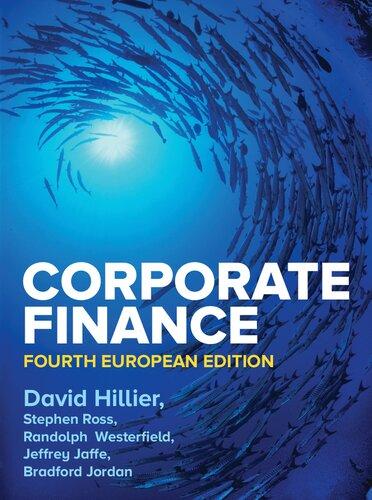A measure of risk-adjusted performance that is often used is the Sharpe ratio. The Sharpe ratio is
Question:
A measure of risk-adjusted performance that is often used is the Sharpe ratio. The Sharpe ratio is calculated as the risk premium of an asset divided by its standard deviation. The standard deviation and return of the funds over the past 10 years are listed here. Calculate the Sharpe ratio for each of these funds. Assume that the expected return and standard deviation of the company equity will be 18 per cent and 70 per cent, respectively. Calculate the Sharpe ratio for the company shares. How appropriate is the Sharpe ratio for these assets? When would you use the Sharpe ratio?
10-year Annual Return (%) Standard Deviation (%)
Skandla Market Index Fund 11.48 15.82 Skandla Small-Cap Fund 16.68 19.64 Skandla Large-Company Equity Fund 11.85 15.41 Skandla Bond Fund 9.67 10.83 You recently graduated from university, and your job search led you to West Coast Yachts at Kip Marina.
Because you felt the company’s business was seaworthy, you accepted a job offer. The first day on the job, while you are finishing your employment paperwork, Dan Ervin, who works in Finance, stops by to inform you about the company’s retirement plan.
Retirement plans are offered by many companies and are tax-deferred savings vehicles, meaning that any deposits you make into the plan are deducted from your current pretax income, so no current taxes are paid on the money. For example, assume your salary will be £50,000 per year. If you contribute £3,000 to the plan, you will pay taxes on only £47,000 in income. There are also no taxes paid on any capital gains or income while you are invested in the plan, but you do pay taxes when you withdraw money at retirement.
As is fairly common, the company also has 5 per cent matched funding. This means that the company will match your contribution up to 5 per cent of your salary, but you must contribute to get the match.
The retirement plan has several options for investments, most of which are mutual funds. A mutual fund is a portfolio of assets. When you purchase shares in a mutual fund, you are actually purchasing partial ownership of the fund’s assets. The return of the fund is the weighted average of the return of the assets owned by the fund, minus any expenses. The largest expense is typically the management fee, paid to the fund manager. The management fee is compensation for the manager, who makes all of the investment decisions for the fund.
West Coast Yachts uses Skandla Life Assurance Company Ltd as its retirement plan administrator. Here are the investment options offered for employees:
• Company Shares One option in the retirement plan is equity ownership of West Coast Yachts. The company is currently privately held. However, when you interviewed with the owner, Larissa Warren, she informed you the company shares were expected to go public in the next three to four years. Until then, a company share price is simply set each year by the board of directors.
• Skandla Market Index Fund This mutual fund tracks the FTSE 100 index. Equities in the fund are weighted exactly the same as the FTSE 100. This means the fund return is approximately the return on the FTSE 100, minus expenses. Because an index fund purchases assets based on the composition of the index it is following, the fund manager is not required to research stocks and make investment decisions.
The result is that the fund expenses are usually low. The Skandla Index Fund charges expenses of 0.15 per cent of assets per year.
• Skandla Small-Cap Fund This fund invests primarily in small-capitalization companies. As such, the returns of the fund are more volatile. The fund can also invest 10 per cent of its assets in companies based outside the United Kingdom. This fund charges 1.70 per cent in expenses.
• Skandla Large-Company Equity Fund This fund invests primarily in large-capitalization companies based in the United Kingdom. The fund is managed by Evan Skandla and has outperformed the market in six of the last eight years. The fund charges 1.50 per cent in expenses.
• Skandla Bond Fund This fund invests in long-term corporate bonds issued by UK-domiciled companies. The fund is restricted to investments in bonds with an investment-grade credit rating. This fund charges 1.40 per cent in expenses.
• Skandla Money Market Fund This fund invests in short-term, high-credit quality debt instruments, which include Treasury bills. As such, the return on the money market fund is only slightly higher than the return on Treasury bills. Because of the credit quality and short-term nature of the investments, there is only a very slight risk of negative return. The fund charges 0.60 per cent in expenses.
Step by Step Answer:






